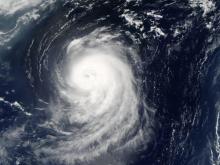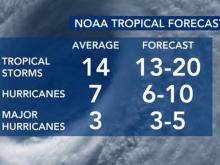- Severe weather leads to fallen trees, car crashes and flooding around the Triangle
- New video shows vehicles being swept away in historic, deadly flash floods in SA on June 12
- $40 million to go to underserved SC counties for Hurricane Helene recovery. Here's what you need to know.
- Family honors Air Force veteran Derwin Anderson Jr. after he died in June flash floods
- City of Wilmington addresses flooding on New Centre Drive
Why are tornadoes spawned from hurricanes particularly dangerous?

Storms that move into North Carolina after a Gulf of Mexico or Florida panhandle landfall have the potential to be particularly devastating.
Wind damage and flooding aren’t the only threats from hurricanes. More than half of hurricanes also produce at least one tornado after making landfall. In 2020, Hurricane Isaias spawned 12 tornadoes in North Carolina. The strongest was an EF-3 in Bertie County that killed two people.
Sometimes, the United States sees 10% of its annual tornadoes in just one tropical system.
How do hurricanes and tropical storms spawn tornadoes?
When a hurricane’s outer rain bands move onshore, the friction from the land causes low-level winds to slow down – but the winds just above the ground remain quite strong. This effect is called a “wind shear.” It causes a change in the wind speed – and sometimes direction.
When wind shear occurs, thunderstorms will begin to rotate, and tornadoes can form.
Keep in mind, sometimes the outer rain bands are hundreds of miles away from the center of the storm, so tornadoes are possible even when the center of circulation is well offshore.
Why are tropical systems from the Gulf of Mexico particularly dangerous?
Storms that form in the Gulf of Mexico can bring tornadoes to North Carolina. As the system moves northeast, areas east of the circulation have a threat for tornadoes.
Tornadoes within tropical systems are particularly dangerous because they tend to form really fast – sometimes in only one or two minutes.
They also move at a rapid pace – as quickly as 50 to 60mph!
However, they are usually short-lived, often just lasting a couple of minutes.
The fast development and movement make them fairly hard to track on radar, so any time there is a tropical system nearby, be sure to prepare for tornadoes, too.
